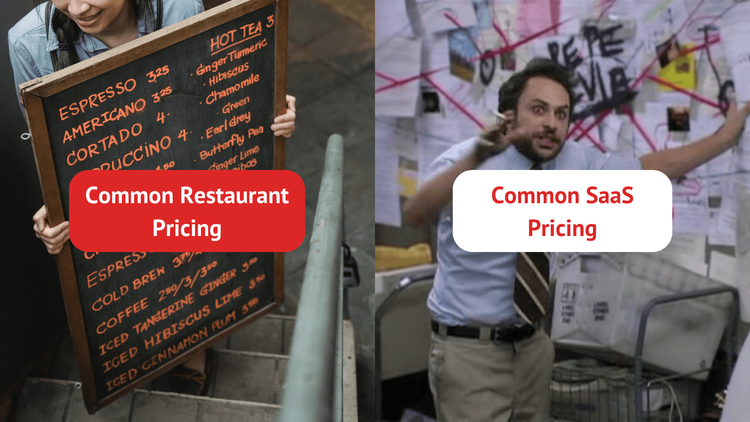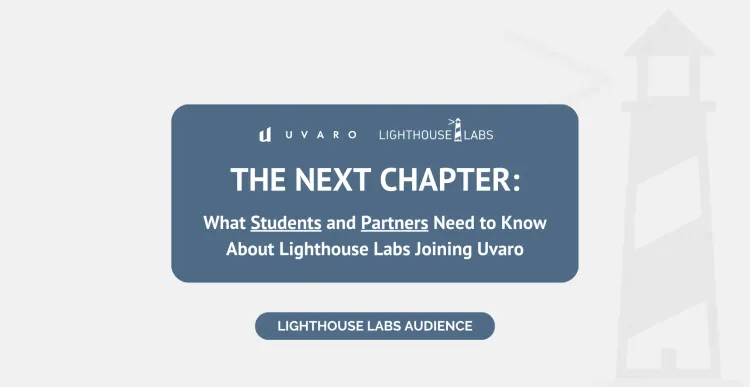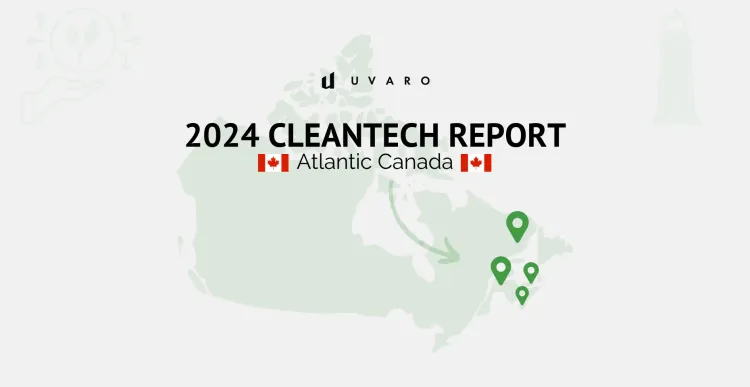SaaS Fundamentals: 7 Common SaaS Pricing Models for Aspiring Tech Professionals
Explore the seven common pricing models in the Software as a Service (SaaS) industry, providing insights into each model's features, benefits, and challenges to help individuals considering a career change to tech sales make informed decisions.

Nov 03, 2023
Lifetime value… cloud computing… churn rates… service level agreements. Let's face it: there’s a lot of specialized terminology in the Software as a Service sector (and that includes its acronym, SaaS)!
And if you’re not in the know, you might feel like you’re trying to solve complex problems in High Valyrian.
But rest assured - if you’re considering a career change, getting to grips with the SaaS industry is far less challenging than you might think. And once you break down concepts that seem intimidating on the surface into understandable components, you’ll feel like a seasoned pro in no time..
Whether you’re coming into tech sales from an outside field like retail, hospitality, or financial services, we’re here to help you make that transition easier. So let’s start with one of the most common questions we get about the SaaS industry at Uvaro: what’s with all the different pricing models - and what do they mean?
The 7 Common Pricing Models In SaaS
Freemium
The freemium pricing model offers customers a fundamental set of features at no cost, with the option to upgrade to a more feature-rich, paid version. The underlying principle is to provide customers a sneak peek of the product, demonstrate its value, and encourage them to upgrade for a comprehensive experience.
As a “try before you buy” approach, freemium models excel at customer acquisition because there’s no up-front financial commitment. Once customers experience the benefits for themselves, they’re more likely to convert. And it can help a company stand out, especially in a competitive market where customers are cautious about paying for untried products.
Notable Freemium Model Users:Dropbox, Slack
Subscription-Based
In a subscription-based pricing model, customers pay a regular fee—typically monthly or annually—for ongoing access to a product or service. This model is widely used among SaaS businesses because it ensures predictable recurring revenue and promotes customer retention through lasting relationships.
Customers also benefit as they don’t have to empty their wallets on upfront costs. Instead, the financial commitment is spread out over time. There’s no need to pay for product or service upgrades and maintenance either – all of that’s included as part of their subscription, incentivizing customers to sustain the relationship.
Subscription-based pricing lives and dies with long-term customer engagement and satisfaction. Customers must continuously perceive value in the software to continue subscribing. This demands providers to constantly innovate and enhance their products.

Notable Subscription-Based Model Users: Adobe Creative Cloud, Microsoft 365
Tiered Pricing Model
Tiered pricing models are another favored approach in SaaS. Think of these as “packages” – the least expensive offers basic features and functionality, while the priciest is jam-packed with everything you have to offer. Tiered pricing can also refer to volume pricing – a similar concept, but rather than unlocking new features, customers get more units of your product as they move up the chain.
This model aims to accommodate a wide customer base, from individual users or small businesses needing basic functionalities to large corporations requiring a full suite of features. It also aims to scale as customers grow, allowing them to start at a lower tier and upgrade as their needs change, without switching to a different product or service.
The challenge for the provider is to identify the appropriate features for each tier and establish a pricing structure that is both profitable and competitive.
Notable Tiered Pricing Model Users: Slack, MailChimp, Dropbox
Flat-Rate Pricing Model
The flat-rate pricing model is the simplest one on this list. In this model, SaaS companies offer a single product with one set of features at a fixed price. The key benefits here are transparency and simplicity; there’s no ambiguity about what the customer gets or how much it costs.
This model is particularly effective for straightforward products that don't need a lot of customization or that perform a single function.
However, flat-rate pricing may not meet the needs of all potential customers, particularly those who need more advanced features or those seeking more affordable options.
Notable Flat-Rate Pricing Model Users: Basecamp, WhatsApp
Feature-Based Pricing Model
Feature-based (sometimes called value-based) pricing means customers pay for particular features or modules of a product. Like an à la carte sushi menu, this model allows customers to select exactly what they need, without paying for unnecessary extras. It's a highly personalized approach that can lead to greater customer satisfaction.
However, it requires providers to clearly convey the value and functionality of each feature, which can be complex at times. Effective product management is also necessary to ensure the correct features are being developed and priced accurately.
Notable Feature-Based Pricing Model Users: Salesforce, HubSpot
Active User Pricing Model
The active user pricing model charges customers based on the number of people who are actually using the product within a company. This is common in SaaS products designed for teams or multiple users.
It's a fair model that scales with the customer's activity. If they have 100 employees but only 15 use it, they’re only billed for 15 seats. This means customers aren’t paying for users who simply aren’t users.
However, this model may discourage full adoption within an organization. And for companies looking to keep costs low, as each additional user will increase the cost.
Notable Active User Pricing Model Users: Atlassian products like Jira and Confluence
Usage-Based Pricing Model
Finally, the usage-based pricing model, also known as pay-as-you-go, charges customers based on how much they use a product. Customers pay for exactly what they use, no more, no less.
This model is another one that scales with users as they grow or experience seasonal fluctuations – and with no up-front costs, it can be a budget-friendly way to pay. But it can be unpredictable for both the customer and the provider as usage can change from month to month. It also requires providers to reliably track and accurately monitor usage – a major hurdle if they don’t have the infrastructure to pull it off.
Notable Usage-Based Pricing Model Users: AWS, Google Cloud.
Tech Sales Foundations (12 Week)
For 12 weeks, 2hrs daily, seasoned instructors will work with your cohort to teach all the skills needed for a successful career in B2B tech sales. You’ll also get 5+ hours of guided independent study with cutting-edge tools.

Unlocking SaaS Savvy with Uvaro
Grasping the diverse SaaS pricing models is a step beyond learning the lingo—it's about appreciating their strategic trade-offs and growth opportunities. Ready to translate this insight into a tech sales career that challenges and rewards you?
If you're poised for change, eager to rekindle your professional passion, or simply looking to pivot into a dynamic industry, Uvaro is your launchpad. We're not just a tech company; we're a thriving community dedicated to Career Success and propelling you into a fulfilling tech sales career, regardless of your current field.
By creating an account and joining our community, you'll start absorbing essential tech and sales knowledge, including the ins and outs of SaaS pricing models. As a Premium member, you'll gain full access to our live Courses, Workshops, and personalized Career Coaching.
The tech world is vast and full of potential. Let Uvaro be your navigator in this exciting journey. Join us now and start shaping your future in tech sales!





